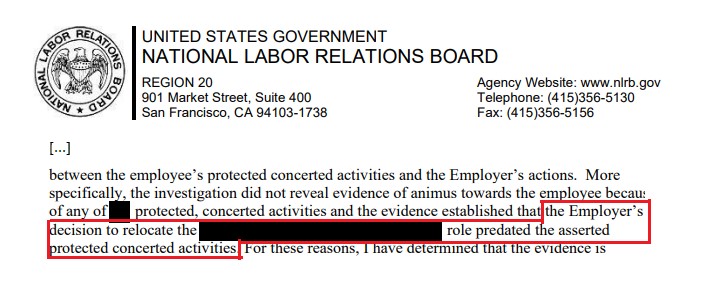Sixties Fan
Diamond Member
- Mar 6, 2017
- 53,544
- 10,411
- 2,140
Entertainment industry veteran and author Lana Melman fights antisemitism in Hollywood out of her love for Judaism and Israel.
In 2011, Melman found herself in the center of a storm when the Boycott, Divestment and Sanctions (BDS) movement began picking up speed in Hollywood. BDS activists were boycotting, threatening and harassing artists with any Israel-related associations.
Melman became premier director of Creative Community for Peace (CCFP), a pro-Israel nonprofit organization that works to combat antisemitism in the entertainment industry. She counseled artists who were unprepared for this type of harassment and helped them to understand that these attacks were not going to have long-term effects on their careers.
In Artists Under Fire, Melman details how she helped singer-songwriter Alicia Keys and her team navigate through a coercive BDS campaign against her when she announced she would be performing in Israel on July 4, 2013.
Artists Under Fire describes how some BDS proponents take harassment and intimidation a step further, to the point of threatening artists’ lives. When former Beatle Sir Paul McCartney announced he would be performing in Tel Aviv to celebrate Israel’s 60th anniversary, he was warned by Islamic activist Omar Bakri Muhammad that if he went through with it, “sacrifice operatives will be waiting for him.” McCartney said he does what he thinks and performed in Israel anyway.
Irish singer-songwriter Sarah McTernan received “sinister threats” after she sang in the Eurovision song contest in Israel. Melman describes the campaign against her as “genuine intimidation.” Some of the foreboding messages said, “You have to be careful”; “Watch where you go”; “You never know where I’ll be”; “Be careful who you’re with.”
MELMAN IMPLORES people to question whether the tactics employed by BDS supporters are reflective of a movement that claims to be about justice and human rights. “Do you want to support an organization that fosters these kinds of threats? Do you find this movement or BDS’s messaging to be moral and ethical? Look at what happens to these artists!”
Melman explains how antisemitic tropes that go as far back as medieval times, like accusing Jews of blood libel, are at the core of BDS campaigns, and that their own messaging proves they are antisemitic. “Repeating antisemitic tropes is part of BDS propaganda. When you say ‘stolen land,’ you are accusing Jews of being greedy thieves, and that’s a classic antisemitic trope that stirs up worldwide Jew-hatred.”
The BDS movement claims to fight against Israel’s “oppression” of Palestinians,” but Melman notes that their own activists “will frequently sabotage attempts to help the Palestinian people.”
She suggests people “write letters to the editors, op-eds, there’s social media – I provide access for people who get my newsletter. We need to be active; a momentum happens.”
Melman recalls that when she was writing her book, she “built a case and put BDS on trial.” It’s clear that BDS supporters don’t want artists under any circumstances to visit Israel because, Melman points out, “then they would see that it’s vibrant and diverse. That’s evidence of the fact that they’re lying because Zionists aren’t afraid of what you’ll see when you go there.”
“I have never seen any call from BDS for peace or prosperity or any way forward,” she adds.
(full article online)

 www.jpost.com
www.jpost.com
In 2011, Melman found herself in the center of a storm when the Boycott, Divestment and Sanctions (BDS) movement began picking up speed in Hollywood. BDS activists were boycotting, threatening and harassing artists with any Israel-related associations.
Melman became premier director of Creative Community for Peace (CCFP), a pro-Israel nonprofit organization that works to combat antisemitism in the entertainment industry. She counseled artists who were unprepared for this type of harassment and helped them to understand that these attacks were not going to have long-term effects on their careers.
In Artists Under Fire, Melman details how she helped singer-songwriter Alicia Keys and her team navigate through a coercive BDS campaign against her when she announced she would be performing in Israel on July 4, 2013.
Artists Under Fire describes how some BDS proponents take harassment and intimidation a step further, to the point of threatening artists’ lives. When former Beatle Sir Paul McCartney announced he would be performing in Tel Aviv to celebrate Israel’s 60th anniversary, he was warned by Islamic activist Omar Bakri Muhammad that if he went through with it, “sacrifice operatives will be waiting for him.” McCartney said he does what he thinks and performed in Israel anyway.
Irish singer-songwriter Sarah McTernan received “sinister threats” after she sang in the Eurovision song contest in Israel. Melman describes the campaign against her as “genuine intimidation.” Some of the foreboding messages said, “You have to be careful”; “Watch where you go”; “You never know where I’ll be”; “Be careful who you’re with.”
MELMAN IMPLORES people to question whether the tactics employed by BDS supporters are reflective of a movement that claims to be about justice and human rights. “Do you want to support an organization that fosters these kinds of threats? Do you find this movement or BDS’s messaging to be moral and ethical? Look at what happens to these artists!”
Melman explains how antisemitic tropes that go as far back as medieval times, like accusing Jews of blood libel, are at the core of BDS campaigns, and that their own messaging proves they are antisemitic. “Repeating antisemitic tropes is part of BDS propaganda. When you say ‘stolen land,’ you are accusing Jews of being greedy thieves, and that’s a classic antisemitic trope that stirs up worldwide Jew-hatred.”
The BDS movement claims to fight against Israel’s “oppression” of Palestinians,” but Melman notes that their own activists “will frequently sabotage attempts to help the Palestinian people.”
She suggests people “write letters to the editors, op-eds, there’s social media – I provide access for people who get my newsletter. We need to be active; a momentum happens.”
Melman recalls that when she was writing her book, she “built a case and put BDS on trial.” It’s clear that BDS supporters don’t want artists under any circumstances to visit Israel because, Melman points out, “then they would see that it’s vibrant and diverse. That’s evidence of the fact that they’re lying because Zionists aren’t afraid of what you’ll see when you go there.”
“I have never seen any call from BDS for peace or prosperity or any way forward,” she adds.
(full article online)

Hollywood insider Lana Melman puts BDS on trial
Lana Melman's new book, Artists Under Fire: The BDS War Against Celebrities, Jews and Israel, is a call to action against censorship and deprivation of artistry.













